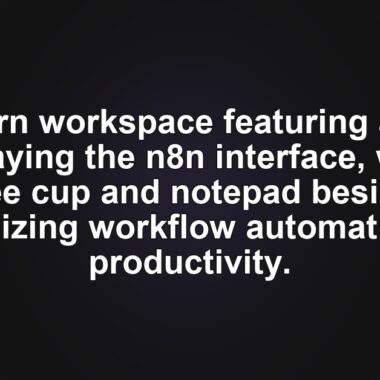Ultimate Guide to Optimizing Your Dedicated Game Server Performance
Optimizing a dedicated game server is essential for achieving a smooth and enjoyable multiplayer gaming experience.
Introduction
A responsive server is crucial for an optimal multiplayer gaming experience. A poorly performing host can cause significant lag or even disconnection, especially when many players access the system simultaneously. Applying proper optimization strategies can maximize your server’s performance. For example, efficiently allocating the host’s hardware usage ensures you don’t waste resources on unnecessary processes. In this article, we will explain how to optimize a dedicated server to achieve maximum performance, exploring methods for both software and hardware management to help you find exactly what you need.
Dedicated Game Server Optimization Strategies
To optimize your game server effectively, you can perform software optimization and network configuration, manage your server resources, tweak game settings, monitor server performance, and balance the load. In this section, we’ll examine six effective optimization strategies for improving the performance of your gaming virtual private server (VPS) and providing an optimal gameplay experience.
Software Optimization
On the software level, optimizing your game server involves minimizing unnecessary packages that can waste resources. Here are several practices to consider:
- Choose lightweight software: Installing lightweight software helps free up your server hardware resources, which you can reallocate for other components. For example, we recommend using the Linux operating system instead of Windows since it runs more efficiently. Also, choose lighter extensions for your game based on user reviews or developer recommendations. To simplify the task, manage the mods and plugins on your server using Hostinger’s Game Panel.
- Minimize installed add-ons: Installing too many mods or extensions in your game server can significantly reduce performance. In addition to consuming storage space, loading them also requires more RAM and CPU power. To optimize your server performance, regularly check and remove unused add-ons. While this process is relatively safe, we recommend backing up your VPS files and checking with users to avoid removing a wrong mod.
- Update packages regularly: Regular software updates ensure the newest security patches, bug fixes, and performance improvements. In addition to the game server components, regularly update your system packages too. To simplify the process, schedule automatic server software updates using a cron job. Alternatively, Hostinger game server hosting users can do so without any command by configuring a new task in the Game Panel.
Network Configuration
To enable multiplayer gameplay, your server connects and exchanges data with players’ computers over a network. Optimizing this transfer process is crucial to avoid performance issues and ensure responsiveness.
An important measure is choosing a server location closest to your audience base. This reduces the travel distance between the host and the clients to minimize latency, resulting in a lag-free gaming experience. Hostinger’s game server hosting offers multiple data centers across different continents, including North America, Asia, and Europe. Users can freely choose one that suits them and switch to a different location anytime.
You can also set up a reverse proxy using a solution like Cloudflare Spectrum. It routes traffic to a data center closest to players’ location to reduce latency and maintain responsiveness.
Resource Management
Managing your server’s resources ensures you don’t misallocate computing power for unnecessary tasks. Instead, you can repurpose it to other essential components to maintain stability.
On the VPS side, you can manage your game server resource usage using virtualization tools like Docker. It lets you package services in separate isolated containers, each with a custom hardware usage limit. For example, you can put the game server instance on a container with a high resource allocation, while reserving the one with a lower usage limit for external services like APIs or plugins.
You can also apply a soft limit to dynamically reallocate resources according to a specific rule. Doing so enables flexible hardware management to ensure each service receives enough computing power.
Game Server Settings Optimization
Games with dedicated servers typically provide a configuration file with various parameters that affect performance. You can change it using a text editor like nano or Hostinger Game Panel’s intuitive setting menu. Here are several common server settings and their suggested values. After changing the configuration, remember to run tests and monitor the host’s performance to ensure stability:
- Memory limit: Memory limit sets the maximum RAM size your gaming server can use. Ideally, you should set it as high as possible but below your system’s total memory capacity. Allocating all your VPS RAM can cause instability because other services, like the database and operating system, won’t get enough resources.
- Maximum ping: Several games let you automatically kick or reject a player if their ping exceeds a threshold. Setting a ping limit ensures players who can connect to the server have an optimal gameplay experience. For casual games, 100 ms ping is acceptable, while competitive eSports titles require lower latency, preferably under 80 ms.
- Map size: A big map requires higher computing power since your VPS must load more assets and scripts. We recommend setting it based on the number of players on your server.
- Player slot: The number of players significantly affects your game server RAM consumption. We recommend starting with a low limit and gradually increasing it if you still have the resources.
- Auto save: Prolonging the interval can help reduce occasional lag for less powerful VPSs. We recommend setting it to 30 minutes at the maximum.
Server Monitoring and Performance Tuning
Monitoring your game server gives you accurate insights into resource usage, which can help you identify areas for improvement. Popular server monitoring tools include Grafana, New Relic, and Prometheus. If you don’t have the time to set them up, use Hostinger’s built-in monitoring tool in hPanel and Game Panel.
Once you configure the monitoring tools, identify your server performance metrics. These may include system uptime, player ping, CPU utilization, memory usage, and storage consumption. When you track the server performance, compare the stats with the baseline performance to identify deviations that might indicate potential issues.
If you use Hostinger’s game hosting plan, ask the Kodee AI assistant to manage your game server. Simply enter the prompts, and Kodee will handle the rest.
Load Balancing and Scalability Techniques
As the number of players and mods in your server increases, you must scale the hosting environment to accommodate their needs. There are two ways to scale a game server: vertically by upgrading the current system or horizontally by adding new instances. Each has its own pros and cons.
Vertical Scaling: This method is simpler since you don’t have to duplicate your files or set up a new system. Hostinger’s VPS plans let you upgrade your resources seamlessly without downtime.
Horizontal Scaling: This method is more flexible since you can set up multiple systems to offload the traffic from the main game server. However, it is more difficult and time-consuming. A popular technique for horizontal scaling is setting up a load balancer to distribute traffic evenly across multiple application servers to optimize stability.
Security Measures for Game Servers
In addition to responsiveness, game server safety is important to maintain uptime and data integrity. Here are several VPS security measures to consider:
- Enforce DDoS protection: Use a content delivery network (CDN) or reverse proxy service like Cloudflare.
- Set up firewall rules: A firewall scans traffic on your game server using custom rules.
- Change the default port: This minimizes the attack surface.
- Scan malware: Regularly scan for malware using tools like Monarx.
- Back up your server: Regular backups maintain service availability and integrity.
Conclusion
Optimizing your game server is crucial for a responsive and lag-free multiplayer gaming experience. In this article, we have explored six methods to do so:
- Optimize software by using lightweight alternatives, minimizing installed add-ons, and updating all packages regularly.
- Improve network performance by choosing the server closest to your player base and setting up a reverse proxy like Cloudflare Spectrum.
- Manage resources dynamically using Docker.
- Change game server settings to minimize player slots and reduce RAM allocation.
- Monitor server resource usage to identify deviations from the baseline performance.
- Set up a load balancer and scale your server to ensure you have enough computing resources.
In addition to performance, maintain your game server security to ensure data integrity and service availability. Important steps include enabling automatic backups and setting up firewall rules, which you can easily do via Hostinger’s hPanel.
How to Optimize a Dedicated Game Server FAQ
What are the key factors for optimizing a dedicated game server?
Network and hardware usage are key considerations when optimizing a game server. Network affects latency and input responsiveness during gaming, while resource utilization impacts frame rates and loading time.
How can I reduce latency on my game server?
To reduce game server latency, choose a data center location closest to your player base. Also, set up multiple VPSs across the globe or use a reverse proxy so players can connect to the one with the lowest delay.
Can I monitor and analyze the performance of my optimized game server?
Absolutely! You can set up tools like Prometheus or use Hostinger’s built-in monitoring feature in hPanel and Game Panel. Tracking performance helps you catch issues quickly and ensure a responsive gaming server.
👉 Start your website with Hostinger – get fast, secure hosting here 👈
🔗 Read more from MinimaDesk:
- How to Disable xmlrpc.php in WordPress: A Step-by-Step Guide
- Mastering the WP-Content Directory in WordPress
- The Ultimate Guide to WP-Content: Access, Upload, and Hide Your WordPress Directory
- Mastering WordPress RSS Feeds: A Beginner’s Guide
🎁 Download free premium WordPress tools from our Starter Tools page.








